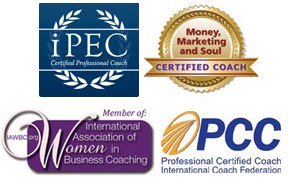Coaching their blocks: Where Do YOU Stop?
 Last issue I talked about the importance of re-framing your enrollment conversations from “selling” to “coaching.” When you coach people, you are in your element and can be sincere, doing what you do best. You can find that post here: Enrollment from the Heart.
Last issue I talked about the importance of re-framing your enrollment conversations from “selling” to “coaching.” When you coach people, you are in your element and can be sincere, doing what you do best. You can find that post here: Enrollment from the Heart.
Many coach’s biggest fear is that they’ll be seen as “pushy.” So they often lean in the other direction and don’t challenge the limiting beliefs, gremlins, or their prospective client’s doubt and fear because the person may suspect their motives.
This does a disservice to the potential client, as well as to the coach. If this sounds like you, in order to effectively enroll clients this fear needs to be put to rest. I’ve broken the challenge down into four steps, to help you do just that:
Step 1: Re-frame the Conversation.
Before you even get on the phone or meet your prospective client, put yourself in the coaching mindset. This is someone you are going to work with and coach, to see if your coaching is a fit for them. If it is, you are going to do what you would do in any coaching situation, help them get past what stops them so they can move forward and achieve their goals. Remember, for them this often means stepping outside of their comfort zone.
Step 2: Commit to doing what’s best for your prospective client.
In other words, if your coaching is not a fit for them, then you’re going to let them know, and help them discover what is a fit for them. No matter how much you may want clients, it won’t be good for either one of you if you take them on. Plus, your commitment to what’s best for the other person will come through clearly to everyone you speak with.
Step 3: Let go of your own beliefs about “sales” that aren’t serving you.
If you hate being “sold” to, if you have a belief that anyone who wants to sell you something and advocates for their product or service is “pushy,” then you will have a challenge in selling your coaching. Your own bias against it will prevent you from supporting people in doing what’s best for them, because of your desire not to be what you “hate.”
You will find it very difficult to create a thriving coaching business, because the very nature of coaching is such that it brings up people’s blocks, stops, and limits immediately. Considering coaching is intrinsically more challenging than considering a new car or a flat screen TV, because it’s about facing oneself. All kinds of seeming unrelated blocks will come up.
Sometimes the most important breakthrough a client has is the one they need in order to get themselves into coaching in the first place.
So understand that if they are interested in your coaching, when they raise an objection, consideration, or concern once you’ve made your presentation, that’s not the end of the conversation, it’s just the beginning.
Step 4: Prepare yourself to let go of those who are not ideal clients or part of your “Tribe.”
Everyone has their own unique way of looking at the world, based on their past experience and beliefs. Every new experience gets run through their own personal filter. Even if you have the purest of intentions, no matter how competent, truthful, honest and sincere you are, there will always be a few who create a different experience. Just expect it.
Those people simply aren’t part of your tribe. They aren’t your ideal clients. Let them go with love and move on. Whatever you do, don’t pull back. Don’t allow their perspective to cause you to contract out of fear of rejection. Your next prospective client will most likely be a perfect match.
To learn more about the nuts and bolts of the enrollment conversation itself, check out my upcoming free teleseminar “Coach Your Way to YES!” How to enroll well-paying clients with confidence, for coaches who love to coach but hate to sell. Click here for more info and to register: http://www.kelliederuyter.com/yes/








Leave a Reply